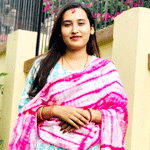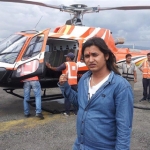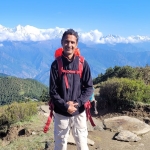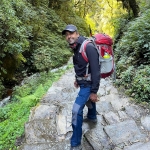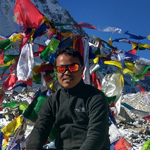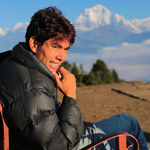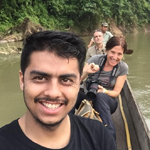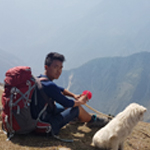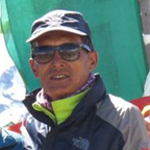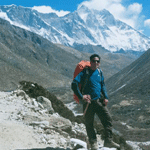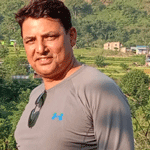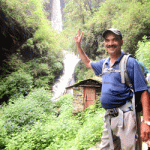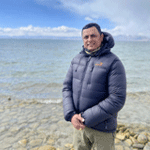Are you planning a Trip to Bhutan? Here’s the complete Bhutan travel guide to help you plan your holiday to Bhutan.
Getting into Bhutan
Bhutan has two airlines in operation –Drukair and Tashi Airlines, a subsidiary of Bhutan Airlines. Drukair operates flights to and from Kathmandu. We usually book flights as part of tour arrangement and we quote fares as given by the respective airlines. If we book the flight ticket in advance, we get good rates and flight available.
When to visit Bhutan
The best time to visit Bhutan is in spring (March, April and May) and autumn (September, October and November). Spring provides the perfect weather with clear blue skies and spins nature into life with colorful blooms. Autumn days are cool and fresh with weather disclosing the best views of snow-capped mountains. In addition, almost all of the festivals in Bhutan takes place in spring and autumn. Places in western Bhutan like Thimphu, Paro, Punakha and Wangdue is good to tour even in summer but central and eastern Bhutan is not possible due to occasional heavy down-pour. Tours can be operated during the whole year but trek to high altitude is not possible in winter as the trekking trail gets heavy snow and frozen.
Visa formalities
We need to have visa in advance to enter Bhutan. To apply the visa, Bhutan Government requires your passport to have atleast 6 months validity from the date of travel and get visa process to Bhutan. Once your visa has been approved we get the Visa Clearance Letter (VCL), which we will have to show at the check-in counters from where you board our flight to Bhutan. Based on this VCL we will get the original visa stamped on our passport on arrival at Paro airport.
If you hold Indian, Bangladeshi or Maldivian passport you will be issued a permit on your arrival and there is no visa required. Indian nationals would require either passport or Voters Card. Bangladeshi and Maldivians require valid passport.
Price
Bhutan government set tariff for high season(March, April, May, September, October and November) is USD 250 per night per person and USD 200 per night per person for low season (January, February, June, July, August and December). You will also have to bear a surcharge of USD 40 per night per person if travelling alone and USD 30 per night per person if travelling in group of two. There is no surcharge for groups of three or more.
Guide services
Bhutan Local Guides are licensed, trained and certified by the Tourism Council of Bhutan. Trekking Plus work with guides in Bhutan who are punctual, humble, flexible, friendly and fluent in English. Moreover, they undergo refreshers course time and again to revise their knowledge, information and guiding skills.
Transport
During our Bhutan Tour, we will arrange your transport based on group sizes by private transporation. Your comfort and safety is our priority during our tour around the country. If you are a solo traveler or travelling in a group of two your transport will be SUVs 4WD cars such as Toyota Prado or Korean cars like Tucson, Santa Fe and Terracan. If it’s a group of three of four we arrange Korean Hyundai H-1 and Toyota Hiace busses and for a group of five or more we provide Toyota coaster buses.
Accommodations
We accommodate our clients in 3 to 4 starred hotels which are standard tourist hotels approved by Bhutan government. They are clean and well maintained. Places where there are no 3 or 4 starred hotels we provide our clients the best option available in those places. Bhutan has options for luxury hotels like Uma, Amankora, Le Meridien, Taj Tashi and so on but for these luxury accommodation you will have to pay extra cost.
Meals
We get varieties of meals such as Continental, Chinese, Indian and Bhutanese local cuisine. Rice is the staple diet for the Bhutanese which is same as in Nepal (Rice - white or yellow (maze rice) is served with two or three side dishes of meat or vegetables opitons. Bhutanese dishes are simple yet delicious with hint of spices and local cheese. The local has a love for spices which is why Bhutan’s national dish is a delicacy of just chilies mixed with cheese.
The most common meat consumed are beef, pork and chicken. Other famous local dishes of Bhutan are norsha paa (beef chilly), phaksha sikam (pork chilly), suja (Butter tea), khuli (buckwheat pancake), momos (dumplings) and many more. We make the best efforts to accommodate your dietary preference and alter meals based on your preference.
Shopping
You can find a number of handicraft shops in Thimphu, Paro and in some of the major towns. The prominent items are hand-woven textiles, carved masks, woven baskets made from bamboo, wooden bowls, handmade paper products and beautiful ornaments of silver and gold. Most of the handicraft shops also sell refined paintings depicting various Buddhist deity, scene or mandala. You can buy postcards and even have personalized stamps made. If you buy antiques check with the store if the product has the government seal without which export will be denied.

